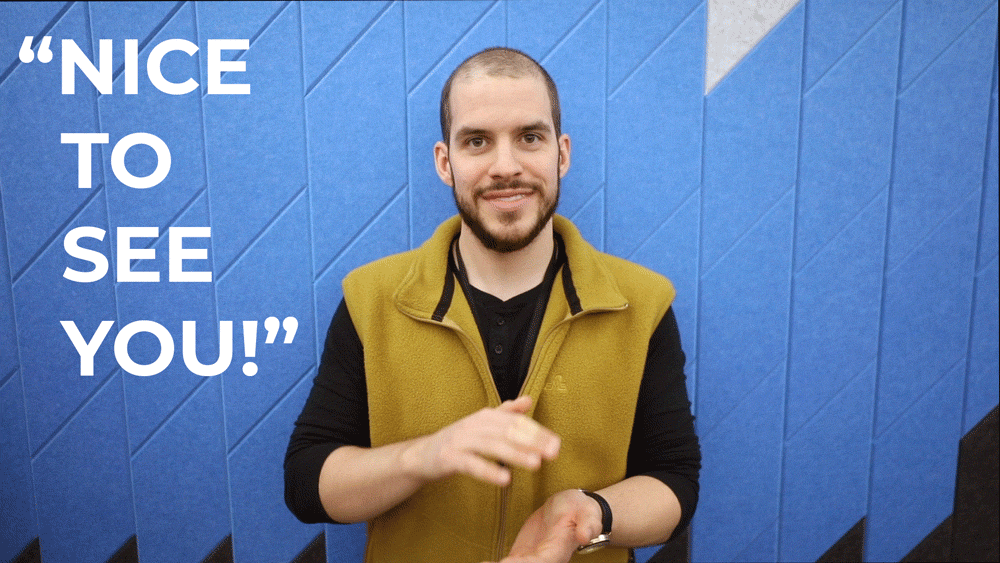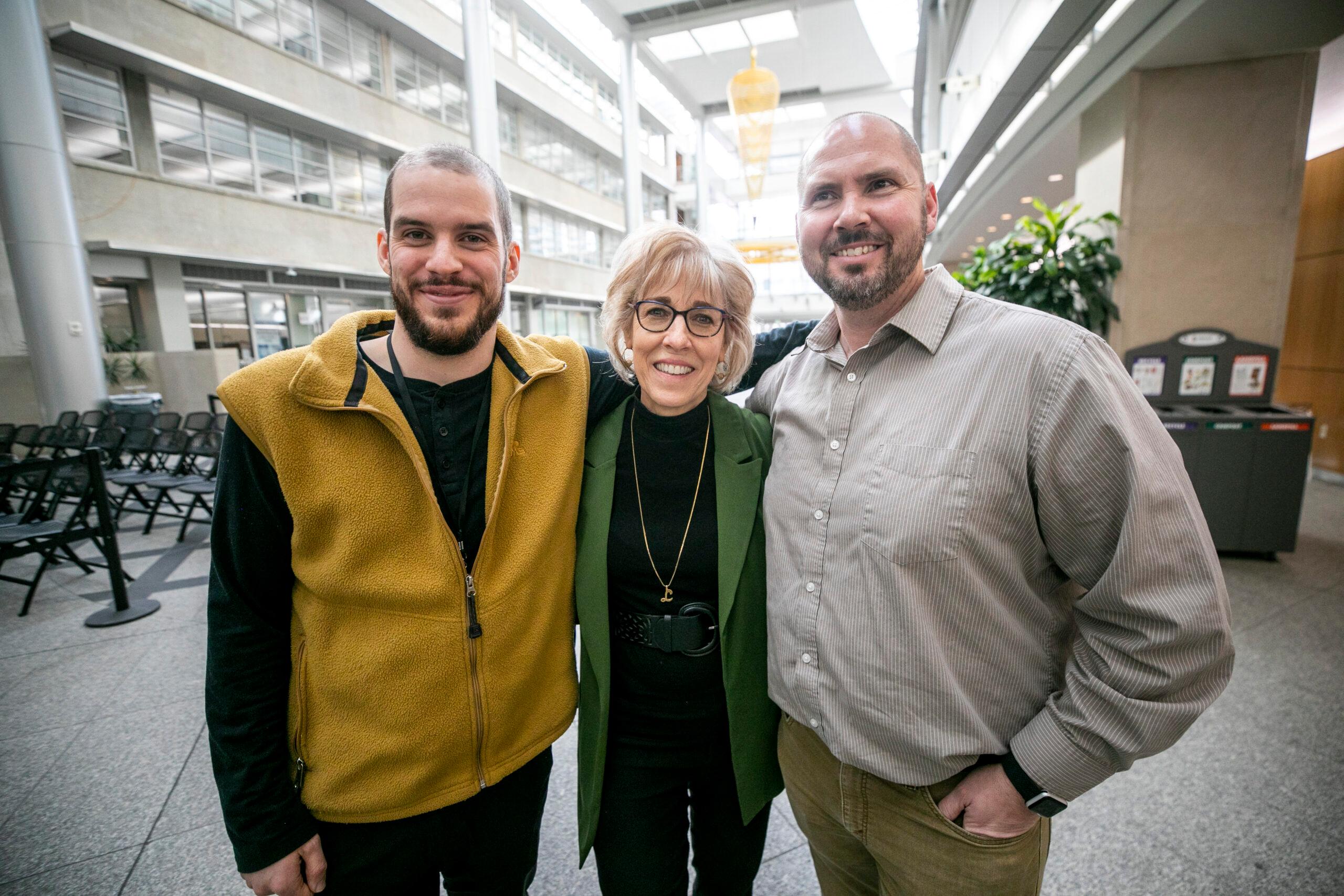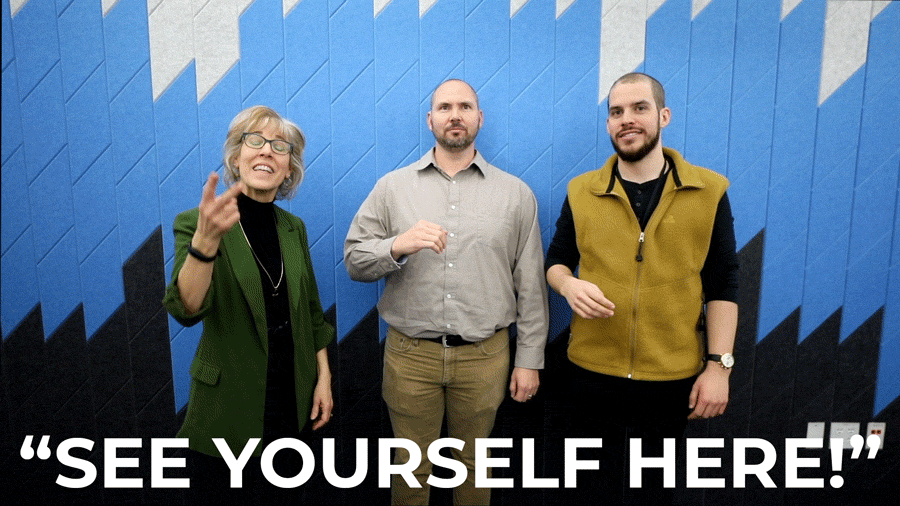Noah Blankenship never planned to become a sign language interpreter. Raised in Boston with an MBA from the Rochester Institute of Technology, he moved to Colorado about two years ago to live, in his words, a "ski bum life." But a year ago, when he was ready for a desk job, he applied for a role with Denver's Office of Deaf and Hard of Hearing Services.
"I'm really proud of my identity, and I feel strong pride with it, and so I thought, why not?" Blankenship said through an interpreter.
Since then, Blankenship has become a recognizable Denver figure. He often interprets for Mayor Mike Johnston, who has filled his first six months in office with press conferences focused on his homelessness agenda. Standing by the mayor's side, Blankenship makes that agenda accessible to the deaf community, with the help of an entire city staff that works specifically on accessibility for deaf and hard of hearing Denverites.

Blankenship's role is unique when it comes to interpretation.
Many interpretation services only employ hearing interpreters, who could theoretically do the job on their own. But hearing interpreters typically do not convey the same vernacular and visuals as a deaf person. That's why Denver employs a mix of hearing and deaf interpreters. Blankenship, who is deaf, works with a hearing interpreter who first translates the spoken words into sign language. Blankenship then signs to the deaf community.
"A lot of what I receive I'm able to copy. But some things, like for example eye gaze, facial expressions, small things are added to cumulate a message for the deaf community," he said. "When I am looking on TV and I see an interpreter I can recognize whether they're hearing or deaf... That was one of the goals that I wanted to have, was more representation of the deaf community on TV."
No single day is the same, as Blankenship and other interpreters travel around the city interpreting anywhere from the Mayor's Office to the airport to the Nuggets Parade. Recently, staff have arranged about 200 hours of interpretation per month. This often includes interpreting for Johnston, who greets Blankenship by saying "nice to see you" in American Sign Language, something Blankenship taught him a few months ago.

The work has put Blankenship on TVs across the city. Sometimes hearing people reach out to Blankenship to praise his work.
"It's like, do you even know what I'm saying?" he said.
Other times, members of the deaf community have been "honest and direct" with their feedback on how Blankenship decided to sign something. But overall, he said the response has been positive. He hopes that by interpreting as a deaf person on TV, other members of the community can see themselves in jobs all across city government.
"They say, 'Oh, I've seen you interpreting with the Mayor, that's really cool that you're actually a deaf person. I was really hoping that you were, but you are. That's wonderful.' They automatically feel a connection with me. That's the deaf community with their government," Blankenship said. "They know that there's opportunities for deaf people to have jobs here."

In the past 30 years, Denver's sign language team has grown from one person to four.
Director Lorrie Kosinski was that one person three decades ago. Like Blankenship, she never planned to become an interpreter either, but started taking sign language classes in college after watching a sign language choir perform.
"I just thought it looked amazing, beautiful," she said.
Without much formal training, Kosinski started as a sign language interpreter for a community college in southern Colorado. When she moved to Denver, she got a job interpreting for the city. Since then, she's become a nationally certified interpreter and has helped grow the one-person role into an entire staff. The team is currently hiring an additional interpreter.
"In the process of doing all this interpreting across the city, I realized how underrepresented and how overlooked the deaf community in general was," Kosinski said. "As that vision grew, and the need became more apparent, I worked just as hard as I could to meet that need and realized I could not do that on my own."
Part of that growth is thanks to the Americans with Disabilities Act, which passed in 1990 and prohibits discrimination on the basis of a disability.
"I hear time and time again, that 'This is too hard. This is too complex. I just wanted to show up at the meeting and know what the Mayor is saying and now I have to go through all these channels,'" Kosinski said. "If our office wasn't here, that would be the standard response. Nothing would probably happen except lawsuits."

In addition to providing live sign language services at things like press conferences, the office coordinates requests for interpreters and real-time captioning across city departments.
One misconception is that everyone who is deaf speaks using the same signs; in reality, there are more than 300 sign languages, and the office helps find interpreters for ones other than American Sign Language. Lately, staff has been connecting with Spanish Sign Language interpreters to support migrants coming from South America.
That's part of Dallas McCarthy's job. McCarthy is another deaf team member who has worked with the city for about four months. He worked a handful of jobs in the business world before getting hired with the city.
McCarthy often works with members of the deaf community to make sure they are getting the services they need. Part of that includes managing things an event organizer might not think about, like ensuring the interpreter will be visible from a crowd and that the room is well lit so people can actually see the interpreter.
"I just want to be here to be able to give back to our community, to make them feel like they are getting those equitable services within the system," McCarthy said through an interpreter.
The office has also been working to raise awareness of sign language services to both hearing and deaf Denverites. Staff have made social media posts advertising the office's services and teaching different phrases; recently, they taught an entire course on sign language.
"My personal wish is for hearing people to know what it's like to be in a deaf person's shoes," McCarthy said.














